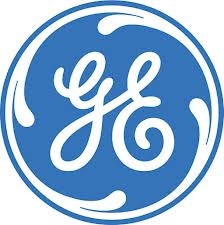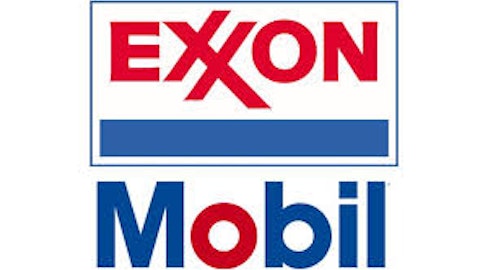Coal, one of this country’s most abundant fuels, is increasingly being targeted as a dirty fuel. That doesn’t have to be the case because the technology to “clean” coal exists today. General Electric Company (NYSE:GE) and Siemens AG (ADR) (NYSE:SI) both build it, and The Southern Company (NYSE:SO) and Duke Energy Corp (NYSE:DUK) are set to use it.
A Dirty Fuel
Coal fuels around 40% of this country’s electric generation. The problem is that burning coal emits numerous pollutants. As we’ve increasingly recognized the impact of our actions on the environment, coal’s image has, justifiably, suffered. However, some of the plants now in use are more than 50 years old. We’ve made a few technological advances over the last half century or so.
Cleaning up its Act

This is the type of plant Duke Energy Corp (NYSE:DUK) has just turned on. It claims it will produce ten times the electricity as the coal plant it replaces and 70% fewer emissions. That shows how clean and efficient coal can be if companies use technology to limit emissions.
This plant should allow Duke Energy Corp (NYSE:DUK) to keep low-cost coal as a viable fuel option. That’s particularly notable as natural gas prices have increased off of their historic lows. In fact, the price rise so far this year has led to a decrease in the the use of gas and an increase in coal. If switching to coal weren’t an option, consumers would ultimately pay the price through higher electric bills.
Duke Energy Corp (NYSE:DUK) is one of the largest utilities in the United States, serving around 7.2 million customers in six states. The company just went through a somewhat troubled merger with Progress Energy, costing nearly $14 billion, which led to the retirement of Duke’s CEO.
The shares yield around 4.6%, the dividend has been increased annually since 2007, and the top and bottom lines look set for slow but steady growth. The new coal plant should help keep fuel costs low, which will help long-term performance. Income investors should take a look.
Costly Upgrades
Duke Energy Corp (NYSE:DUK)’s new coal plant costs more than originally planned and all of the costs couldn’t be passed on to customers. Shareholders indirectly pay any costs that don’t get paid by customers in the form of slower earnings and dividend growth. That’s a big issue to watch, since clean coal technology is expensive.
The Southern Company (NYSE:SO) is building a similar coal power plant that has also seen cost overruns. It isn’t complete, so there’s no telling how much it will cost or how much of that cost Southern will be allowed to pass on to customers.
Still, keeping its energy options open will be a long-term benefit for The Southern Company (NYSE:SO) and will likely make the expense well worth the effort. It is also one of two U.S. utilities currently building new nuclear power plants. Clearly, the company is keeping up with technological change.
The Southern Company (NYSE:SO) serves around 4.4 million customers across four states. The shares recently yielded around 4.6%, backed by over a decade of annual dividend increases. It is a good option for conservative income investors.
The Makers
As more coal gasification plants get built, the easier it will be to figure out their true costs and avoid overruns. Higher natural gas prices will only increase the economic viability of such projects. That will benefit General Electric Company (NYSE:GE) and Siemens AG (ADR) (NYSE:SI), both of which offer coal gasification technology. Although not the main business at either company, power is a key business for each.
General Electric Company (NYSE:GE) is probably the better option for investors. Since taking a government bailout and cutting its dividend during the 2007 to 2009 recession, it has refocused around its industrial core. That’s been a slow process, but earnings and dividends have headed higher over the last three years. GE shares recently yielded around 3.2% and remain well off their pre-recession highs. There’s plenty of upside potential.
Siemens AG (ADR) (NYSE:SI), meanwhile, is a roughly similar industrial giant based out of Europe. While the company didn’t face the same financial difficulties as General Electric Company (NYSE:GE) during the recession, its exposure to economically troubled Europe remains a drag. Additionally, the company’s profit margins aren’t as robust as GE’s.
Siemens AG (ADR) (NYSE:SI) is restructuring to bring costs down. Over the next few years that should help improve margins and support earnings growth. The shares yield around 2.8%, but don’t have as much long-term appeal as GE.
Fixing Coal
The technology to clean coal is here today. It isn’t cheap, but keeping coal as a fuel option is vital to keeping electric costs contained. The Southern Company (NYSE:SO) and Duke Energy Corp (NYSE:DUK) are ahead of the curve on building the coal plants of the future and should ultimately benefit from their willingness to take risks. General Electric Company (NYSE:GE) and Siemens AG (ADR) (NYSE:SI), meanwhile, will benefit as new coal plants are built using this technology both domestically and abroad, where the use of coal isn’t frowned upon.
The article The Future of Coal Today originally appeared on Fool.com and is written by Reuben Brewer.
Reuben Brewer has no position in any stocks mentioned. The Motley Fool recommends Southern Company. The Motley Fool owns shares of General Electric Company. Reuben is a member of The Motley Fool Blog Network — entries represent the personal opinion of the blogger and are not formally edited.
Copyright © 1995 – 2013 The Motley Fool, LLC. All rights reserved. The Motley Fool has a disclosure policy.





